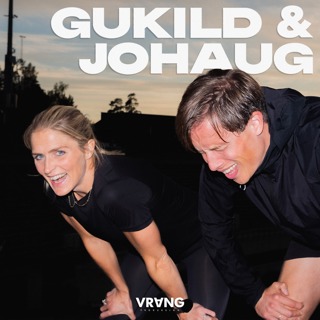
Biden’s Cabinet Picks, Part 2: Antony Blinken
What kind of foreign policy is possible for the United States after four years of isolationism under President Trump?Antony Blinken, President-elect Joe Biden’s pick for secretary of state, has an interventionist streak, but some vestiges of Trump-era foreign policy will be hard to upend.If confirmed, Mr. Blinken faces the challenge of making the case at home that taking a fuller role abroad is important, while persuading international allies that the United States can be counted on.What course is he likely to steer through that narrow channel? Guest: David E. Sanger, a national security correspondent for The New York Times. We want to hear from you. Fill out our survey about The Daily and other shows at: nytimes.com/thedailysurveyFor an exclusive look at how the biggest stories on our show come together, subscribe to our newsletter. Read the latest edition here.Background reading: Mr. Blinken’s extensive foreign policy credentials are expected to help calm American diplomats and global leaders after four years of the Trump administration’s ricocheting strategies and nationalist swaggering.European allies of the United States have welcomed a president who doesn’t see them as rivals. But with the possibility of a Republican-controlled Senate, they are also wary.Mr. Biden wants to reactivate the 2015 Iran nuclear deal, but the killing of the top nuclear scientist in the Middle Eastern nation, which Tehran has blamed on Israel, could complicate that aim. For more information on today’s episode, visit nytimes.com/thedaily. Subscribe today at nytimes.com/podcasts or on Apple Podcasts and Spotify. You can also subscribe via your favorite podcast app here https://www.nytimes.com/activate-access/audio?source=podcatcher. For more podcasts and narrated articles, download The New York Times app at nytimes.com/app.
2 Des 202027min

Biden’s Cabinet Picks, Part 1: Janet Yellen
Janet Yellen, who is poised to become secretary of the Treasury, will immediately have her work cut out for her. The U.S. economy is in a precarious state and Congress is consumed by partisan politics.Ms. Yellen, however, is no stranger to crisis. She has already held the government’s other top economic jobs — including chairwoman of the Federal Reserve from 2014 to 2018, helping the country through the last major financial emergency.Now, facing another steep challenge, we look at the measures she might take to get the economy humming again.Guest: Jeanna Smialek, who covers the Federal Reserve and the economy for The New York Times. We want to hear from you. Fill out our survey about The Daily and other shows at: nytimes.com/thedailysurveyFor an exclusive look at how the biggest stories on our show come together, subscribe to our newsletter. Read the latest edition here.Background reading: Ms. Yellen became an economist when few women entered the discipline. She is now set to become the first female Treasury secretary and one of the few people ever to have wielded economic power from the White House, the Federal Reserve and the president’s cabinet.While she may have excelled at some big jobs in the past, this role may be her hardest yet.For more information on today’s episode, visit nytimes.com/thedaily Subscribe today at nytimes.com/podcasts or on Apple Podcasts and Spotify. You can also subscribe via your favorite podcast app here https://www.nytimes.com/activate-access/audio?source=podcatcher. For more podcasts and narrated articles, download The New York Times app at nytimes.com/app.
1 Des 202027min

When and How You’ll Get a Vaccine
For Americans, months of collective isolation and fear could soon be winding down. A coronavirus vaccine may be just weeks away.According to Dr. Moncef Slaoui, head of Operation Warp Speed, the federal effort to accelerate vaccine development, the first Americans could receive the vaccine in mid-December.With the vaccine within reach, we turn to more logistical questions: Who will receive the shots first? Who will distribute them? And what could go wrong?Guest: Katie Thomas, who covers the drug industry for The New York Times.We want to hear from you. Fill out our survey about The Daily and other shows at: nytimes.com/thedailysurveyFor more information on today’s episode, visit nytimes.com/thedaily Background reading: Promising clinical trials have buoyed hope that the end of the pandemic is in sight. But even if the vaccines are authorized, only a sliver of the American public will be able to get one by the end of the year.In mid-December, 6.4 million doses of Pfizer’s vaccine are expected to be shipped across the United States in an initial push. Subscribe today at nytimes.com/podcasts or on Apple Podcasts and Spotify. You can also subscribe via your favorite podcast app here https://www.nytimes.com/activate-access/audio?source=podcatcher. For more podcasts and narrated articles, download The New York Times app at nytimes.com/app.
30 Nov 202024min

A Day at the Food Pantry
On a day early this fall, Nikita Stewart, who covers social services for The New York Times, and the Daily producers Annie Brown and Stella Tan spent a day at Council of Peoples Organization, a food pantry in Brooklyn, speaking to its workers and clients.As with many other pantries in the city, it has seen its demand rocket during the pandemic as many New Yorkers face food shortages. And with the year drawing to a close, many of New York City’s pantries — often run with private money — face a funding crisis.Today, the story of one day in the operations of a New York food pantry. Guest: Nikita Stewart, who covers social services for The New York Times; Annie Brown, a senior audio producer for The Times; and Stella Tan, an associate audio producer for The Times. We want to hear from you. Fill out our survey about The Daily and other shows at: nytimes.com/thedailysurveyFor more information on today’s episode, visit nytimes.com/thedaily Background reading: Here are five key statistics that show how hunger is worsening in New York City.An estimated 1.5 million New Yorkers can’t afford food, and tens of thousands have shown up at the city’s food pantries since the pandemic began. But there is relief and hope when they are at home cooking. Subscribe today at nytimes.com/podcasts or on Apple Podcasts and Spotify. You can also subscribe via your favorite podcast app here https://www.nytimes.com/activate-access/audio?source=podcatcher. For more podcasts and narrated articles, download The New York Times app at nytimes.com/app.
25 Nov 202035min

A Failed Attempt to Overturn the Election
Pressure and litigation appear to have been the pillars of President Trump’s response to his general election loss.His team filed a litany of court cases in battleground states. In some, such as Georgia and Michigan, the president and his allies took an even more bullish approach, attempting to use their influence to bear down on election officials.As preparations for the transfer of power finally get underway, we take a look at how the Trump campaign’s attempts to overturn the election played out.Guest: Jim Rutenberg, a writer-at-large for The New York Times and The Times Magazine, walks us through the Trump campaign’s strategy in key states. We want to hear from you. Fill out our survey about The Daily and other shows at: nytimes.com/thedailysurveyFor more information on today’s episode, visit nytimes.com/thedaily Background reading: The Trump administration’s authorization of the transition process is a strong sign that the president’s last-ditch bid to overturn the results of the election is coming to an end. But he has yet to concede the election.In a chaotic effort to overturn the election results, the president and his campaign lawyers have spent weeks claiming without convincing proof that rampant fraud corrupted vote tallies in many battleground states.These efforts heavily targeted cities with large Black populations. Subscribe today at nytimes.com/podcasts or on Apple Podcasts and Spotify. You can also subscribe via your favorite podcast app here https://www.nytimes.com/activate-access/audio?source=podcatcher. For more podcasts and narrated articles, download The New York Times app at nytimes.com/app.
24 Nov 202025min

New York City’s 3 Percent Problem
This week New York City’s public schools will close their doors and students will once again undertake online instruction.The shutdown was triggered when 3 percent of coronavirus tests in the city came back positive over seven days. There are questions, however, around this number being used as a trigger — some health officials maintain that schools are safe.When is the right time for schools to reopen and what is the right threshold for closures? We explore what lessons New York City’s struggles hold for the rest of the nation.Guest: Eliza Shapiro, who covers New York City education for The New York Times, walks us through the city’s decision to reopen schools and the difficult decision to shut them down. We want to hear from you. Fill out our survey about The Daily and other shows at: nytimes.com/thedailysurveyFor more information on today’s episode, visit nytimes.com/thedaily Background reading: New York City’s public school system will close this week, moving to all-remote instruction and disrupting the education of roughly 300,000 children.As schools close again, frustrated and angry parents say the decision does not make the city safer. Subscribe today at nytimes.com/podcasts or on Apple Podcasts and Spotify. You can also subscribe via your favorite podcast app here https://www.nytimes.com/activate-access/audio?source=podcatcher. For more podcasts and narrated articles, download The New York Times app at nytimes.com/app.
23 Nov 202027min

The Sunday Read: 'Man to Man'
For years, Wil S. Hylton had been drawn to his cousin’s strength and violence. He was pulled in by the archetype that he embodied and was envious of the power he seemed to command.Wil describes his relative’s violence as “ambient” and “endemic,” but he was sure it wouldn’t turn on him. Until a few years ago, when his cousin tried to kill him.“My attraction to my cousin and my detachment as a husband both reside in the pantheon of male tropes,” he wrote. “Masculinity is a religion. It’s a compendium of saints: the vaunted patriarch, the taciturn cowboy, the errant knight, the reluctant hero, the gentle giant and omniscient father.”On today’s Sunday Read, Wil’s wide-ranging exploration of masculinity.This story was written by Wil S. Hylton and recorded by Audm. To hear more audio stories from publishers like The New York Times, download Audm for iPhone or Android. Subscribe today at nytimes.com/podcasts or on Apple Podcasts and Spotify. You can also subscribe via your favorite podcast app here https://www.nytimes.com/activate-access/audio?source=podcatcher. For more podcasts and narrated articles, download The New York Times app at nytimes.com/app.
22 Nov 20201h 25min

When the Pandemic Came to Rural Wisconsin
When the pandemic struck, Patty Schachtner, in her capacity as both a member of the Wisconsin State Senate and chief medical officer for St. Croix County, tried to remain one step ahead. It was an approach criticized by many in her conservative community. She was preparing for the worst-case scenario. And now it has arrived — cases and deaths are on the rise in Wisconsin. We chart her journey through the months of the pandemic.Guest: Julie Bosman, who covers the Midwest for The New York Times, spoke with Patty Schachtner over several months about how she was experiencing the pandemic.We want to hear from you. Fill out our survey about The Daily and other shows at: nytimes.com/thedailysurveyFor more information on today’s episode, visit nytimes.com/thedaily Background reading: The recent coronavirus outbreak in Wisconsin has escalated rapidly. Here is our case tracker for the state.As coronavirus cases rise across the United States, death rates have been rising far more slowly. But there are signs that this is shifting. Last week, Wisconsin was among a number of states that recorded more deaths in the previous seven days than in any other week of the pandemic. Subscribe today at nytimes.com/podcasts or on Apple Podcasts and Spotify. You can also subscribe via your favorite podcast app here https://www.nytimes.com/activate-access/audio?source=podcatcher. For more podcasts and narrated articles, download The New York Times app at nytimes.com/app.
20 Nov 202029min






















